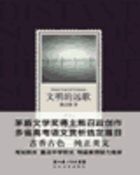39. The not considering of this has been a fundamental and perplexing oversight. For proof whereof we need go no farther than the case before us. It having been observed that the most diverging rays brought into the mind the idea of nearest distance, and that still, as the divergency decreased, the distance increased: and it being thought the connexion between the various degrees of divergency and distance was immediate; this naturally leads one to conclude, from an ill-grounded analogy, that converging rays shall make an object appear at an immense distance: and that, as the convergency increases, the distance (if it were possible) should do so likewise. That this was the cause of Dr. Barrow's mistake is evident from his own words which we have quoted. Whereas had the learned doctor observed that diverging and converging rays, how opposite soever they may seem, do nevertheless agree in producing the same effect, to wit, confusedness of vision, greater degrees whereof are produced indifferently, either as the divergency or convergency and the rays increaseth. And that it is by this effect, which is the same in both, that either the divergency or convergency is perceived by the eye; I say, had he but considered this, it is certain he would have made a quite contrary judgment, and rightly concluded that those rays which fall on the eye with greater degrees of convergency should make the object from whence they proceed appear by so much the nearer. But it is plain it was impossible for any man to attain to a right notion of this matter so long as he had regard only to lines and angles, and did not apprehend the true nature of vision, and how far it was of mathematical consideration.
40. Before we dismiss this subject, it is fit we take notice of a query relating thereto, proposed by the ingenious Mr. Molyneux, is his Treatise of Dioptrics ,where speaking of this difficulty, he has these words:
'And so he ( i.e. Dr. Barrow) leaves this difficulty to the solution of others, which I (after so great an example) shall do likewise; but with the resolution of the same admirable author of not quitting the evident doarine which we have before laid down, for determining the locus objecti , on account of being pressed by one difficulty which seems inexplicable till a more intimate knowledge of the visive faculty be obtained by mortals.
In the meantime, I propose it to the consideration of the ingenious, whether the locus apparens of an object placed as in this 9th section be not as much before the eye as the distinct base is behind the eye!' To which query we may venture to answer in the negative. For in the present case the rule for determining the distance of the distinct base, or respective focus from the glass, is this: As the difference between the distance of the object and focus is to the focus or focal length, so the distance of the object from the glass is to the distance of the respective focus or distinct base from the glass .Let us now suppose the object to be placed at the distance of the focal length, and one half of the focal length from the glass, and the eye close to the glass, hence it will follow by the rule that the distance of the distinct base behind the eye is double the true distance of the object before the eye. If therefore Mr. Molyneux's conjecture held good, it would follow that the eye should see the object twice as far off as it really is; and in other cases at three or four times its due distance, or more. But this manifestly contradicts experience, the object never appearing, at farthest, beyond its due distance. Whatever, therefore, is built on this supposition (vid. Corol. I. Prop. 57, ibid.) comes to the ground along with it.
41. From what hath been premised it is a manifest consequence that a man born blind, being made to see, would, at first, have no idea of distance by sight; the sun and stars, the remotest objects as well as the nearer, would all seem to be in his eye, or rather in his mind. The objects intromitted by sight would seem to him (as in truth they are) no other than a new set of thoughts or sensations, each whereof is as near to him as the perceptions of pain or pleasure, or the most inward passions of his soul. For our judging objects provided by sight to be at any distance, or without the mind, is (vid. sect. 28) entirely the effect of experience, which one in those circumstances could not yet have attained to.
42. It is indeed otherwise upon the common supposition that men judge of distance by the angle of the optic axes, just as one in the dark, or a blind-man by the angle comprehended by two sticks, one whereof he held in each hand. For if this were true, it would follow that one blind from his birth being made to see, should stand in need of no new experience in order to perceive distance by sight. But that this is false has, I think, been sufficiently demonstrated.
43. And perhaps upon a strict inquiry we shall not find that even those who from their birth have grown up in a continued habit of seeing are irrecoverably prejudiced on the other side, to wit, in thinking what they see to be at a distance from them. For at this time it seems agreed on all hands, by those who have had any thoughts of that matter, that colours, which are the proper and immediate object of sight, are not without the mind. But then it will be said, by sight we have also the ideas of extension, and figure, and motion; all which may well be thought without, and at some distance from the mind, though colour should not. In answer to this I appeal to any man's experience, whether the visible extension of any object doth not appear as near to him as the colour of that object; nay, whether they do not both seem to be in the very same place. Is not the extension we see coloured, and is it possible for us, so much as in thought, to separate and abstract colour from extension? Now, where the extension is there surely is the figure, and there the motion too. I speak of those which are perceived by sight.















